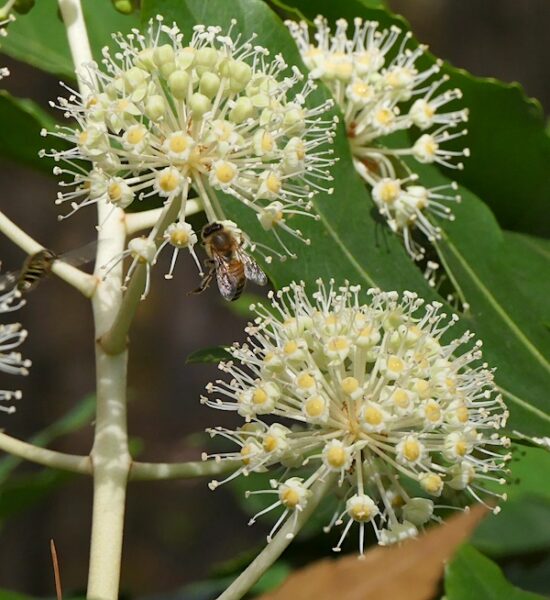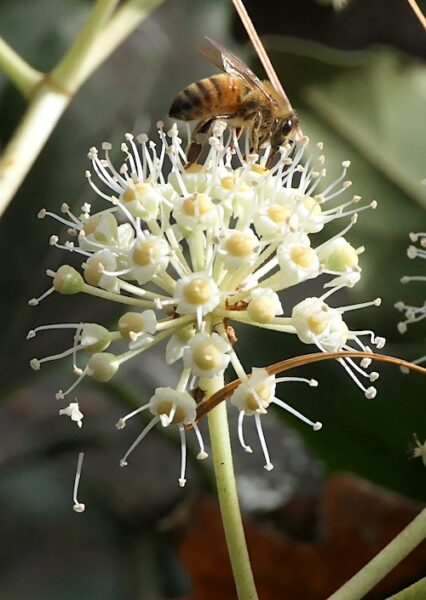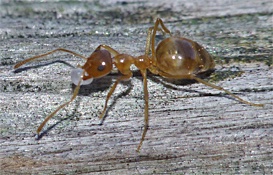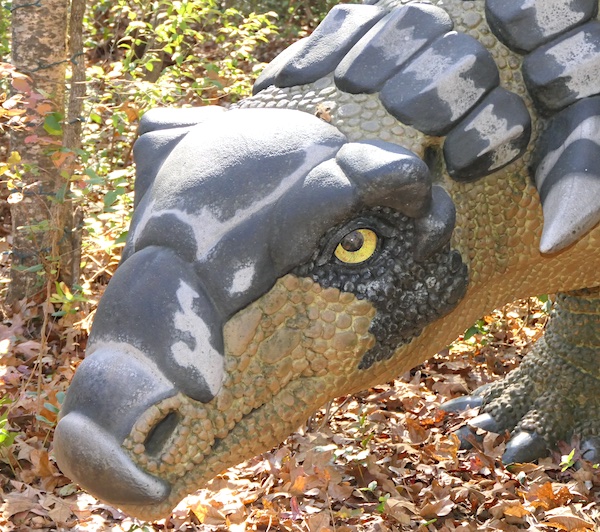Top Photo: Fatsia Japonica growing on Dinosaur Trail, Museum of Life and Science.
Our two late fall and winter blooming plants on the Dinosaur Trail are flowering, Fatsia and Mahonia. Neither are native plants but have been planted on the trail as examples, or at least relatives, of plants that were common at the time dinosaurs may have populated the area. There are also ginkgo trees and several palms along the way.

On mild winter days you may see honey bees, various flies, and false honey ants nectaring and or gathering pollen at either plant’s flowers. False honey ants (Prenolepis imparis) or winter ants as some refer to them, aestivate during the warmer months, becoming active when temperatures cool off.



All of these plants will do well as long as we don’t get a long period of below freezing temps or an ice storm with extended low temps to follow. Both are considered hardy and can tolerate our mild winters.
While on the trail, check out the dinosaurs. There are eighteen individual dinos representing nine varieties.

Ranger Greg